- Home
- Mary Hooper
At the Sign of the Sugared Plum
At the Sign of the Sugared Plum Read online
At The Sign Of
The Sugared Plum
Mary Hooper
For Pat Samuel
An inspiration to all her friends
Contents
Chapter One: The first week of June, 1665
Chapter Two: The second week of June
Chapter Three: The third week of June
Chapter Four: The last week of June
Chapter Five: The first week of July
Chapter Six: The second week of July
Chapter Seven: The third week of July
Chapter Eight: The fourth week of July
Chapter Nine: The first week of August
Chapter Ten: The second week of August
Chapter Eleven: The third week of August
Chapter Twelve: The fourth week of August
Chapter Thirteen: The first week of September
Glossary
Notes on London’s Plague, 1665
Note on the author
Also by Mary Hooper
Recipes from the Seventeenth Century
Chapter One
The first week of June, 1665
‘June 7th. The hottest day that ever I felt in my life . . .’
To tell the truth, I was rather glad to get away from Farmer Price and his rickety old cart. He made me uneasy with his hog’s breath and his red, sweaty face and the way he’d suddenly bellow out laughing at nothing at all. I was uneasy, too, about something he’d said when I’d told him I was going to London to join my sister Sarah in her shop.
‘You be going to live in the City, Hannah?’ he’d asked, pushing his battered hat up over his forehead. ‘Wouldn’t think you’d want to go there.’
‘Oh, but I do!’ I’d said, for I’d been set on living in London for as long as I could remember. ‘I’m fair desperate to reach the place.’
‘Times like this . . . thought your sister would try and keep you away.’
‘No, she sent for me specially,’ I’d said, puzzled. ‘Her shop is doing well and she wants my help in it. I’m to be trained in the art of making sweetmeats,’ I’d added.
‘Sweetmeats is it?’ He’d given one of his bellows. ‘That’s comfits for corpses, then!’
He left me in Southwarke on the south bank of the Thames, and I thanked him, slipped down from his cart and – remembering to take my bundle and basket from the back – began to walk down the crowded road towards London Bridge.
As the bridge came into view I stopped to draw breath, putting down my baggage but being careful to keep my things close by, for I’d been warned often enough about the thieving cutpurses and murderous villains who thronged the streets of London. I straightened my skirts and flounced out my petticoat to show off the creamy ruff of lace I’d sewn onto it – Sarah had told me that petticoats were now worn to be seen – then pushed down my hair to try and flatten it. This was difficult for, to my great vexation, it stuck out as curly as the tails of piglets and was flame red. Nothing I wore, be it hat, hood or cap, could contain it. I pulled my new white cap down tightly, however, and tied the ribbons into a tidy bow under my chin. I hoped I looked a pleasant and comely sight walking across into the city, and that no one would look at me and realise that I was a newly arrived country girl.
It was a hot day even though it was only the first of June, and all the hotter for me because I was wearing several layers of clothes. This wasn’t because I’d misjudged the weather, more because I knew that whatever I didn’t wear, I’d have to carry. I had on then: a cambric shift, two petticoats, a dark linsey-woolsey skirt and a linen blouse. Over these was a short jacket which had been embroidered by my mother, and a dark woollen shawl lay across my shoulders.
I’d been studying the people carefully as we’d neared the bridge, hoping that I might see my friend Abigail, who’d come from our village last year to be a maid in one of the big houses, and also hoping to see some great lady, a person of quality, so I could judge how well I stood against her regarding fashion. There was no sign of Abby, however, and most of the quality were in sedan chairs or carriages, with only the middling and poorer sort on foot. These folk were wearing a great variety of things: men were in tweedy country clothes, rough working worsteds or the severely cut suits and white collars of the Puritans, the women wearing everything from costly velvet down to poor rags that my mother would have scorned to use as polishing cloths for the pewter.
‘That’s a fine red wig you’ve got there, lass!’ a young male voice said, and I realised that I’d paused beside a brewhouse.
I turned indignantly on the speaker. ‘It’s not a wig. It’s my own hair!’ I said to the two men – one young and one old – who were leaning against the wall, mugs of ale in their hands.
‘And fine patches across your nose, too,’ said the elder.
I opened my mouth to say more and then realised that the youth and man outside the Gown and Claret were making fun of me.
‘They’re not patches, William, they’re called sun kisses!’ the first said, and they both roared with laughter.
I picked up my basket, feeling my cheeks go pink. I hated my hair, but even more than that I hated my freckles, and one of the first things I intended to do in London was to visit an apothecary and see what treatment the great ladies were using for their prevention. I pushed my nose into the air and moved on, only just avoiding a deep rut in the road full of all manner of foul-smelling muck. As I faltered, my foot slipped out of my wooden clog, but I regained my balance, picked up my skirts and carefully negotiated around the rut.
‘Well danced, young miss!’ called over the older man.
‘It’s a young red bantum fresh up from the country!’ said the youth, and I pretended not to hear. At home I was always being teased about my vivid colouring but I hadn’t thought I’d stand out in London, too.
‘A spring chicken ripe for the plucking!’
‘You mind a piece of old Cromwell up there don’t fall on you!’ the first went on.
‘An eyeball or an ear!’
Before I could stop myself I’d glanced up to the over-arching gateway to London Bridge, where there was a collection of human heads pierced by poles, and let out a small shriek of horror.
I heard further mannish laughter behind me and was annoyed for being so green, for I’d known well enough that the heads of felons were displayed on the bridge – and I’d even been to a public execution – so it should have been nothing to me. The thought of a piece of one of those heads, though, one of those mouldered skulls, falling as I passed underneath – well, I forgave myself that shriek.
I walked on sniffing the air tentatively. London was crowded and smelt foul. And not just farmhouse-foul, but a churning mixture of rotting meat, kitchen slops, boiled bones, sulphurous smoke and the sweat and discharge from a thousand animal and human bodies. The bridge was teeming with people because – unless you took a ferry – it was the only way you could get across from Southwarke into the City. I knew this because my sister Sarah had told me many times the route I should take to reach her in Crown and King Place, where she traded under the sign of the Sugared Plum.
It had been arranged a year or so back that if Sarah needed my help, and if mother could spare me at home, I’d come to London to work with her, and two months ago I’d been near overcome with excitement when a letter had arrived, a letter with my own name on it brought over by our church minister, saying Sarah’s trade was increasing and that she would welcome me there as soon as possible.
‘But you’ll get lost in London, I know you will!’ she’d said on that last visit home. ‘You’re such a cod’s head you lose yourself going across the fields from home to church on a Sunday.’
‘That’s only beca
use I don’t want to get there,’ I’d said. Why sit on a hard bench listening to a two-hour sermon when there were so many other, more interesting things to see and do on the way?
Our family home was in a small village called Chertsey which was a good half-day’s journey away from the City, and if I could find things to interest me there, then you might imagine how I stared around me, marvelling, on London Bridge. There were a great variety of houses faced with brick, timber and all manner of coloured and decorated plasters, and they were of every shape and size, some crammed into minute spaces and others which towered and leaned this way and that. Even more interesting were the shops, and I peered, amazed, into the windows of those that were clustered along the parapet of the bridge. I had never seen such an array of things for sale in all my life: books, china, wooden toys, brooms, ribbons, wigs, buckles, pots, feathered hats and girdles – London had everything!
I began to plan what I’d buy when I was rich. We would be rich, I was sure – Sarah wouldn’t have sent for me unless the shop was doing well. We weren’t poor at home by any means – we had several fine chairs and settles, some pewter plates and space enough so that I only had to share a bed chamber with Anne, my younger sister (my little brothers had a room of their own) – but it was impossible there to follow the fashions. And besides, even if I could buy the silk jackets and flowered tabby waistcoats I craved, who would see me wearing them in the country, apart from booby gamekeepers or woodcutters’ sons? In London, though, I might have the chance to make a good match – or at least be taken by a fine young man to a coffee house or one of the pleasure gardens.
Coming off the bridge I steadied myself as a great fat sow, grunting madly, and a litter of piglets swept by me and began rooting for nourishment in the mud and foul refuse outside a shop door. At home, mother always fed our pigs on the best scraps and leavings, but here I could see precious little that they could eat. Mother said that the tenderness of the bacon depended on the pigs being well fed, and Father sometimes remarked that they ate better than he did. The last time he’d said this, though, Mother had served him up a mess of muddy potato peelings on our best pewter, and he hadn’t said it since.
I dawdled, sweating gently in the heat, staring at everything, listening to the cries of the street pedlars to ‘Come buy!’ a hundred different things, and wondering and exclaiming to myself by turn. So many busy, interesting people . . . what were they all doing? Where were they going? Two gallants passed swiftly on horseback in a blur of jewel-coloured velvets and gold lace, their spurs and stirrups glittering in the sunlight, then came several sedan chairs, then a bright yellow carriage drawn by four fine horses with gilded leather bridles. The carriage door had a family crest on it and at the window sat a lady dressed in rich silks, peering at the world over a mask held up to her face.
She was going to a romantic assignation, I was sure. I’d heard many tales of the court and the intrigues which went on, for it was said that the king had many mistresses and the gentlemen and ladies of the court not only approved of his carryings-on, but did the same thing. My mother and I had soaked up such rumours when they reached us through the ballads or the news-sheets sold us by street pedlars, but now I was set to hear them first hand.
Reaching the other side of the bridge, I turned right along a broad street and then paused at a water conduit in a small, paved area. The streets stretched out in seven directions here, like the spokes of a wheel, and Sarah had told me to go down the one which had a tavern called the Toad and Drum at the top. I did so, and found the street narrow and mean, with mud instead of cobbles underfoot. The houses were so tall here that rays of sunlight could only occasionally peep through the gaps between them, and their protruding bay windows meant that anyone living at the top could have put out a hand and touched a person in the room of the house opposite.
At the bottom of this street there was a series of alleys and I went down the first, past a dunghill and some piles of rotting refuse, and through into a small, busy market selling all manner of roots and herbs. Laid out here were rough trestle tables loaded with produce, and there were more traders selling from baskets or sacks on the ground. Food shops stood close by, their coloured signs announcing them in vividly-painted pictures and words to be: The House of Plum Pudding, The Gingerbread Man and the Pigeon Pie shop, and, being hungry, I started to wonder what Sarah would have prepared for supper.
I peered into the windows, then lingered by a stall selling strange, brightly-coloured fruit. I’d seen oranges and lemons before – I’d once saved to buy a lemon, Abigail having told me that it was most excellent at fading freckles – but most of the other vivid, oddly-shaped objects were new to me. I stopped, fascinated, amid the jostling people, but the shrill cries of the stallholders urging customers to, ‘Come buy before night!’ reminded me that I had to get on. If I got lost in the backstreets in the dark I knew for certain that I’d get my throat cut and never be seen again.
A little further on was another small square with a number of ways leading off it and I stood there, perplexed, for a moment. Sarah had told me that the city was like a cony-warren and it surely was, although I’d had plenty of time since her last visit to go over the route in my mind. After some thought I went along an alleyway, passed more shops and entered the churchyard of St Olave’s where I came across six small children standing amid the tombstones playing a game. One was evidently pretending to be the minister, for he had a long dark piece of cloth round his shoulders as a vestment and was proclaiming in a solemn voice. One was a corpse, lying ‘dead’ on the ground muffled in a winding sheet and the others – the mourners – were wailing and crying. I deduced they were playing at funerals and after staring at them for some moments – fascinated, for I’d never seen children play such a game at home – I stepped past the ‘body’ and went out of the back gate of the churchyard. Going across a small bridge over a river I took to be the Fleet, I finally found myself in Crown and King Place.
Excited now, I looked up at the swinging shop and house signs, searching for Sarah’s. I saw the Black Boy, the Half Moon, the Oak Tree, the Miller’s Daughter – and then, in a line of four or five shops, found the one I’d been looking for: a painted representation of a sugared plum. I swung my bundle of clothes over my shoulder and broke into a run, slipping and sliding on the cobbles in my effort to get there quickly, and thinking all the while how happy Sarah would be to see me.
Nearing the shop, seeing it close by, I have to own to a feeling of disappointment. From how she’d spoken of it I’d been imagining it to be large and painted in gay colours, like some of the shops on London Bridge, with a bowed window crammed with sweetmeats. It was not, though. It was like the others in the same row: small, with no glass in the front, and it had a wooden casement of the type that divided into two when the shop was open, the top forming an awning above and the bottom part making an open counter.
Sarah was in the back of the shop, chopping something on a marble slab and looking very cool in a cotton dress with a starched white apron over it. She was tall – as tall as Father, with a shapely figure, thick dark hair that I’d always envied, and no freckles. Not one.
I went in to greet her, sniffing in appreciation, for the shop smelt of spices and sugar water and its wooden floor was thick with strewing herbs, which was pleasant after some of the odious smells outside.
‘Sarah!’ I said. ‘Here I am.’
She looked up at me and I was disconcerted to see that she seemed surprised – even shocked – at the sight of me. Surely she hadn’t forgotten that I was coming?
‘Hannah!’ she said. ‘How did you—’
‘Just as we planned,’ I said blithely. ‘I took Farmer Price’s cart to Southwarke and then walked from there. But what a muddle and a mess it all is in London. What stinks! What crowds!’
‘But what are you doing here, Hannah?’
I put down my bundle and my basket. ‘I’ve come to help you, of course – just as you asked. The Reverend Davies broug
ht your letter to me and I was that excited – Father said he’s never had a letter in his life. But where is your living space? Where shall I sleep? Can I look round?’
‘But I wrote to you again,’ she said. ‘I wrote two weeks back and said not to come.’
‘Not to come?’ I said in disbelief. ‘Surely you didn’t —’
‘I wrote to you care of Reverend Davies again. Didn’t he come to see you?’
I shook my head, upset and bitterly disappointed. I couldn’t bear it if I had to go back to Chertsey! What about all my grand plans for living in London, for wearing the latest fashions, for attending playhouses and bear gardens, going to fairs and maybe meeting a handsome gallant?
‘But why don’t you want me here?’ I asked. ‘I’ll be of such a help to you! Mother has given me some recipes for glazing of fruit and I’m much improved in my reading and writing. I’ll be able to help you in all manner of things.’ I couldn’t understand why she didn’t want me there and began to wonder what I had done in the past for which she might not, after all, have been able to forgive me. Accidentally tearing the new lace that she’d been making into a cap, perhaps, or running out of the house early on St Valentine’s day in order to greet Chertsey’s only comely young farmer before she did.
‘It’s not because I don’t want you here, Hannah,’ she said. ‘It’s because . . . well, haven’t you heard?’ She dropped her voice as she spoke.
‘Heard what?’
‘About . . . about the plague,’ she said, looking round and shuddering slightly, as if the thing she was talking about was standing like a great and horrible brute behind her. ‘The plague has broken out again in London.’
I breathed a sigh of relief. ‘Oh, is that it!’ I said. So it wasn’t because of me or anything I’d done. ‘Is that all? Why, there’s always a plague somewhere and as long as it’s not here – I mean, not right here—’
‘Well, it’s not in this parish,’ she admitted. ‘But there are some cases in St Giles – and a house has been shut up in Drury Lane.’

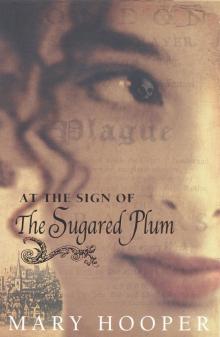 At the Sign of the Sugared Plum
At the Sign of the Sugared Plum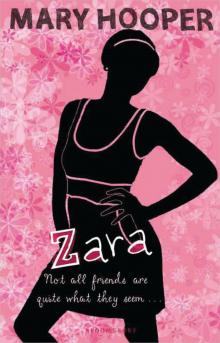 Zara
Zara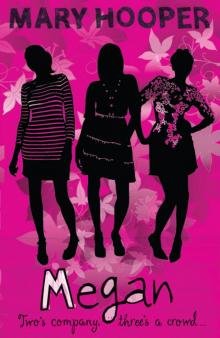 Megan 3
Megan 3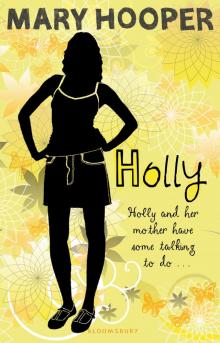 Holly
Holly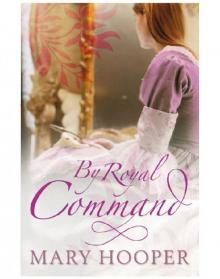 By Royal Command
By Royal Command Newes from the Dead
Newes from the Dead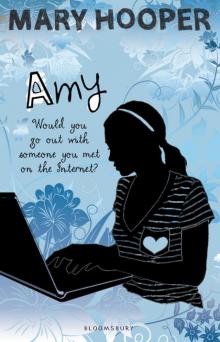 Amy
Amy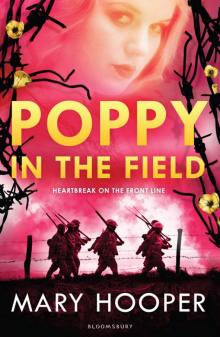 Poppy in the Field
Poppy in the Field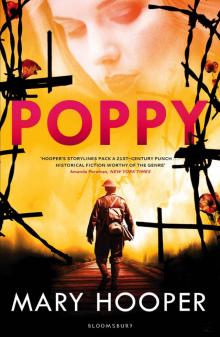 Poppy
Poppy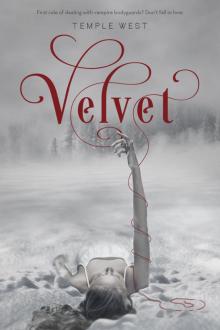 Velvet
Velvet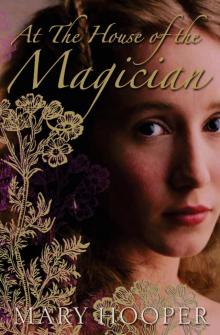 At the House of the Magician
At the House of the Magician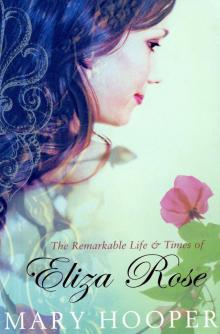 The Remarkable Life and Times of Eliza Rose
The Remarkable Life and Times of Eliza Rose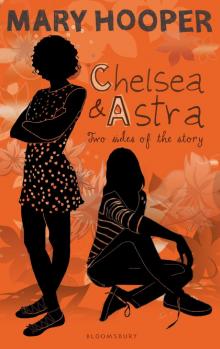 Chelsea and Astra
Chelsea and Astra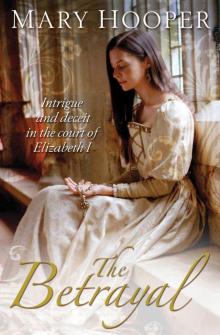 The Betrayal
The Betrayal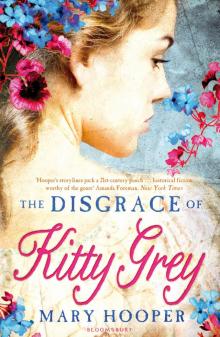 The Disgrace of Kitty Grey
The Disgrace of Kitty Grey Fallen Grace
Fallen Grace